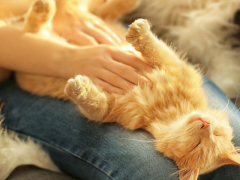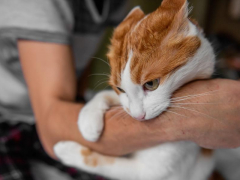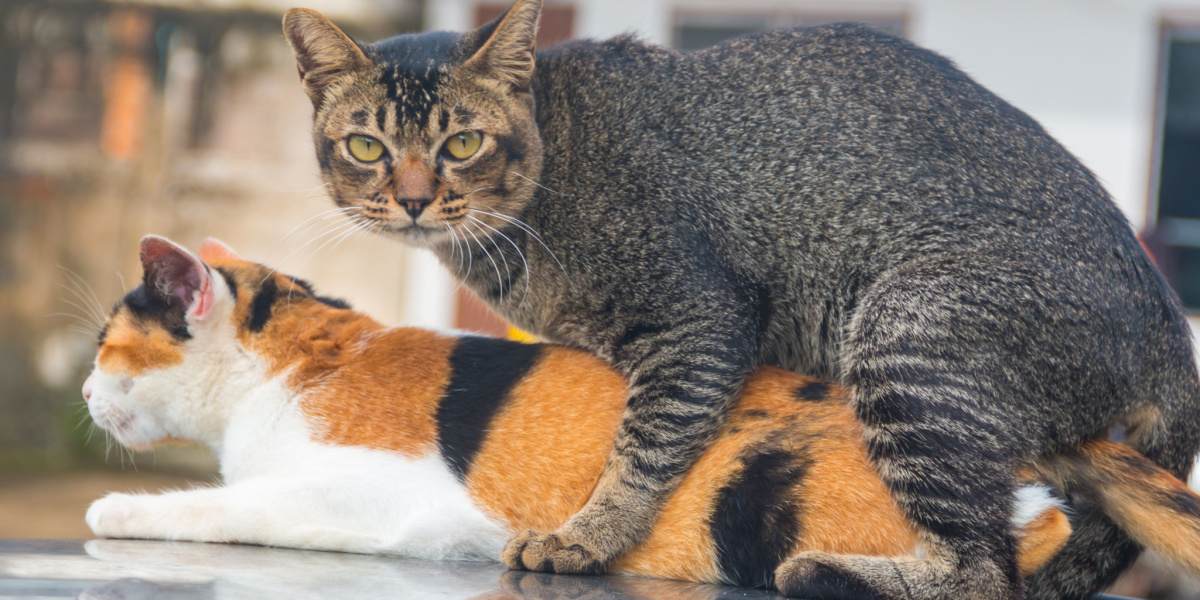
When cats mate, it might sound like more of a fight than a romantic encounter. As dramatic as it can sound, these feline mating noises are not a cause for concern.
However, the female cat is justified in shouting, and it has a lot to do with a thorny penis (yes, you did read that right!). Here, we look at the feline mating process from courtship to copulation, and why a prickly penis is a useful anatomical quirk.
Before we get into the nitty gritty of noisy mating, it’s helpful to know a few basics about the feline reproductive cycle and why the noise starts even before a male cat is on the scene.
Sexual Maturity and the Mating Season
Female cats, also known as queens, can reach sexual maturity and start breeding from as early as 4 months of age. Male cats (tomcats) tend to be a little older before they reach puberty, usually at around 6 months of age.
Longer days and warmer temperatures kickstart the breeding season for cats. This season typically lasts from February to October in the Northern Hemisphere, and from October to February in the Southern Hemisphere. However, artificial lighting and house temperatures mean that some indoor cats may breed all year round.
Heats and Calling
When a queen is receptive to the attentions of a male suitor and ready to breed, she is said to be “in heat” or “in season.” This is when the noise begins. Queens in heat become pretty vocal and “call” to attract males for mating. They also start behaving a little strangely, even seeming like they may be in pain or distress (don’t worry, they’re not!).
Signs your female cat is in heat include:
- Restlessness
- A loud trilling call or wailing (calling)
- Rubbing and rolling around
- Lordosis (lowering her front end and sticking her rear end up in the air)
A heat cycle lasts for around seven to 10 days and repeats every two to three weeks during the breeding season until the cat is pregnant (or spayed). Tomcats may call back, and often compete and fight against each other for females, adding to the general commotion surrounding breeding.
Although calling is somewhat noisy, the real screaming starts once mating begins. Let’s look at the mating (copulation) process and why it brings about a whole new level of vocal expression.
Mating Behavior
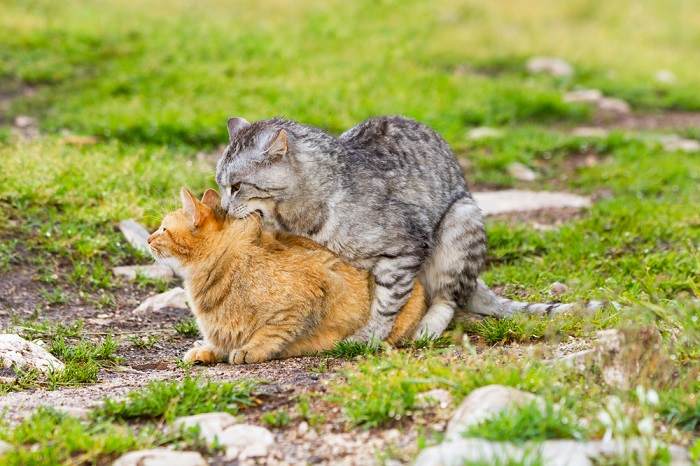
The tomcat bites the queen’s neck to prevent her from turning and attacking him.
During copulation, the male mounts the female and bites her neck to hold her still in a display of dominance. The tomcat does this to protect himself—biting is thought to relax the queen and prevent her from turning and attacking him.
This is where things can start to get even noisier. The female will scream during or at the end of copulation, and the male might join in in response. Intercourse in cats is purely functional, so there is no time for romance here!
Once the business of mating is over, and the male starts to remove his penis, the queen’s behavior becomes quite frantic: her pupils dilate, and she will cry or meow very loudly (also known as caterwauling). There is no love lost as the female will often then turn and attack the tomcat before starting to lick her genital area for a few minutes. She will normally then roll several times before recovering and beginning to call again, sometimes in as little as 30 minutes.
Stimulation Ovulators and Multiple Matings
Cats are stimulation-based ovulators—the queen needs to mate in order for eggs to be released from her ovaries, ready to be fertilized. Most cats need to mate three to four times in 24 hours to stimulate egg release (ovulation), so they are unlikely to get pregnant after the first mating alone.
Queens will often mate with a number of different tomcats in a short period of time to increase their chances of ovulating and getting pregnant, so a litter of kittens may have several different fathers. This might sound a little promiscuous, but it is all part of the natural way of ensuring reproductive success and species survival. It’s a pretty clever evolutionary trait!
Lots of matings mean lots of screaming, but why is that exactly?
Why All the Noise?
Both the queen and the tomcat can be noisy during mating, but the female tends to be responsible for some of the more dramatic noises. It’s not really that surprising considering the interesting anatomy of the male cat’s reproductive organs.
The feline penis is covered in lots of tiny, keratinized spines that trigger ovulation when inside the female. These barbs also help to keep the penis in place during mating. This anatomy is an essential anatomical quirk that increases the chance of successful mating and pregnancy, but it also makes for a scratchy, painful experience, and is therefore part of the reason behind the queen’s screams, especially as the penis is removed at the end of mating.
The female also experiences a hormonal shock during or immediately after mating. This rapid hormone surge is also thought to play a role in the screaming and frantic aggressive behavior toward the male after copulation.
Can You Stop Your Cat Screaming?
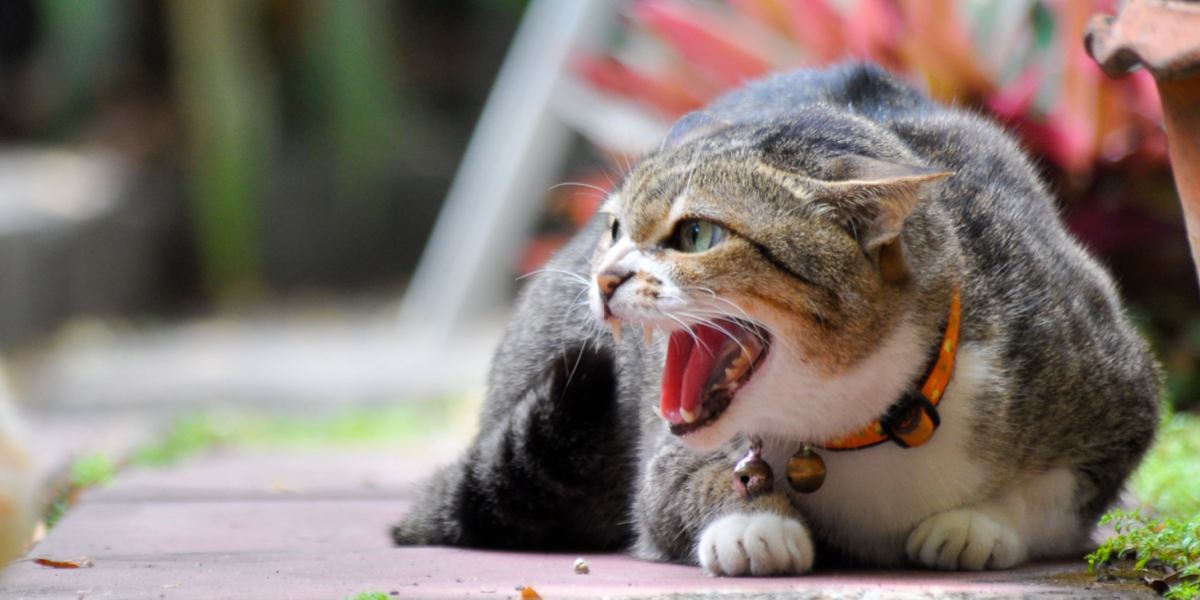
The best way to stop mating-related behaviors is spaying or neutering your cat.
It’s clear that mating is far from a quiet process in cats. Queens come into season every two to three weeks (or sooner) and will only have relatively short breaks from calling. Both male and female cats will roam on the lookout for a mate, and fighting between males is common as they compete for a queen’s attention.
This can all be quite tiresome for cats and their owners. If you are not planning to breed your cat, the most effective way to stop this behavior is by neutering them (there are plenty of other benefits, too!). Ask your veterinarian for advice on spaying or castrating your cat.
Final Thoughts
Cats can be very vocal in the lead-up to mating, but they take it to a whole new expressive level during copulation itself. Screaming is part of a normal, healthy mating ritual, even if it does all seem a little alarming or odd to the uninitiated. The thorny cat penis, hormonal changes, calling, and male competition all play their part in making feline mating a noisy affair.
Also Read: How Much Does It Cost Spay or Neuter A Cat?


